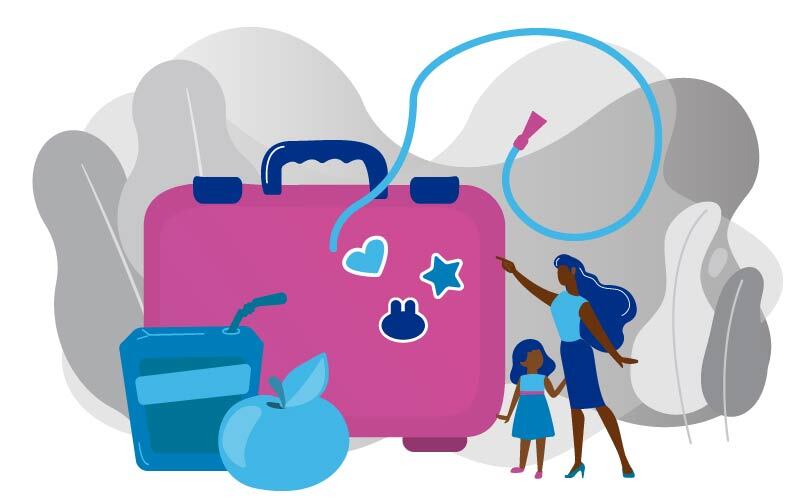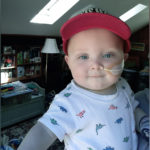Growth and Nutrition Program works with schools to support kids with feeding challenges

Returning to school doesn’t just mean stocking up on pencils, paper, and new clothes. For some children, going back to school also involves special nutritional needs. Kids with feeding difficulties — as well as those who rely on a feeding tube for nourishment — require care that doesn’t end when the school day begins.
The team in the Growth and Nutrition Program at Boston Children’s Hospital cares for kids who have feeding issues or trouble gaining weight. When necessary, that care extends beyond a child’s home life and into school, where the team works directly with school nurses, teachers, and administrators, ensuring that patients have access to the support they need.
“We tailor our recommendations and goals to fit within each child’s school,” explains Anna Rouse, the program’s social worker.
Different patients, different needs
Along with Rouse, psychologist Ryan Davidson and nurse Chelsey Huffman coordinate with a patient’s parents, as well as their school or daycare, to understand what foods the child brings to school, what they actually eat, how they interact with friends and teachers during mealtime, and any other relevant behaviors. Based on this information, the team advocates for changes, offers support, and makes suggestions.
Here’s how the team has recently worked with schools to help make sure three patients* are receiving optimal nutrition.
Matthew. This patient receives his nutrition through a feeding tube, but had started having issues with vomiting while at school. The Growth and Nutrition team worked with Matthew’s school nurse to determine the triggers for his vomiting and revamp his nutrition plan. Together with his parents, they have been able to help Matthew stop vomiting so he can remain in school.
Emma. Because Emma tends to not eat enough, her parents sent food to school with her as part of her treatment plan — but she often brought the food back home uneaten. Working with Emma’s school, the Growth and Nutrition team learned that she would become anxious when she couldn’t sit at her usual lunch table. That anxiety caused her to skip the meal altogether. In response to this problem, Emma’s school worked to create a more predictable lunch schedule and seating arrangement for her.
Danny. Danny has attention-deficit/hyperactivity disorder (ADHD), which made it difficult for him to stay still, even at lunchtime. The Growth and Nutrition team worked with his school to get a clearer idea of how his diagnosis was affecting his ability to sit down and enjoy his meals. Keeping his ADHD in mind, they have been able to address his feeding challenges.
A unique approach
The Growth and Nutrition team also works with daycare providers to address the special needs of younger kids with feeding challenges. Although a staple of most daycare programs, naptime can throw off some children’s schedules for sleeping and eating. The group also helps patient families with 504 plans advocate for support from school administrators.
This multidisciplinary approach is “really unique,” says Davidson. “Working together, we’re better able to understand a child and their relationship with food in multiple environments — at home and at school.”
*Names have been changed.
Learn more and make an appointment with the Growth and Nutrition Program.
Related Posts :
-

"I am a superhero": Joecel and his mom work to address feeding challenges
Joecel Castillo loves Spiderman, Batman, He-Man — and pancakes. They’re the sorts of favorites that might show up on any 5...
-

A taste of childhood: One family’s journey to an IV-free diet
Children with short bowel syndrome often miss out on childhood’s simple and delicious pleasures, like birthday cake, ...
-

Taking a leap of faith: Jack says goodbye to his G-tube
As they waited for their son Jack’s appointment, Marika and Josh Reuling had no indication that July 17, 2018, would be ...
-

From frustration to confidence: Training helps parents replace their baby’s NG tube
When the parents of 10-month-old Miles Couture were first told he would need a nasogastric (NG) tube to receive his ...





